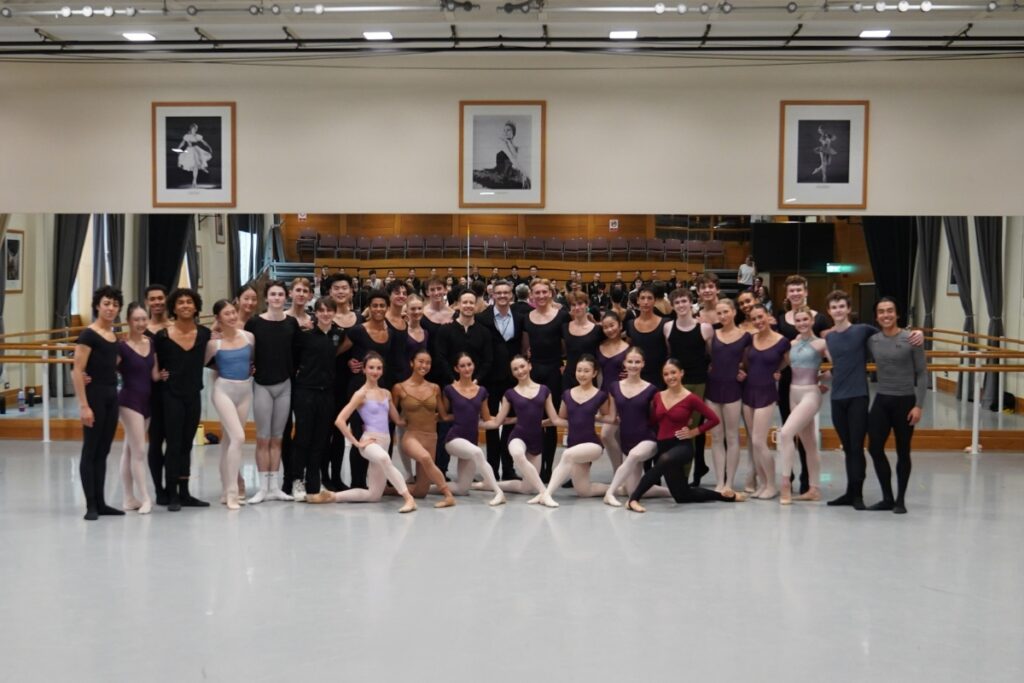Women who inspire us: Celebrating International Women’s Day
Today is International Women’s Day, celebrated worldwide to recognise women’s achievements and raise awareness for gender equality. We feel lucky as an organisation to have inspiring women walk through our doors each day, from our students to their teachers to the staff at the School. This year, we spoke to two women who inspire us here at the School: Belinda Hatley, Artistic Manager of the Development Programme, and Sarah Kundi, 1st Year ladies Ballet Teacher.
During your training, who were the women you looked up to, and who do you admire now?
BH: I was captivated by Marguerite Porter at the Royal Opera House at 12, and later, dance actresses like Lynn Seymour and Alessandra Ferri influenced my love for ballet’s expressive power. Now, I admire women campaigning for liberty and equal rights and those unsung heroines gracefully navigating life’s challenges.
SK: During training, Tamara Rojo was my main inspiration. Joining the English National Ballet in my career and working closely with her was unexpected and amazing, bringing my journey full circle. I’m inspired daily by the women in my life, including family and friends from my first job 20 years ago.
Who were some of your female teachers and mentors who were instrumental in your training and development?
BH: I had amazing mentors throughout my career. Patricia Linton, Nancy Kilgour, and Katya Zvelebilova taught me at White Lodge and the Upper School. Elizabeth Anderton’s analogies gave me clear pictures of how to use my body. Dame Monica Mason coached me for almost a year during a long injury. Lesley Collier gave me a lot of knowledge in preparation for Aurora. Lynn Seymour related every movement to real life while coaching me in Five Brahms Waltzes.
SK: Two teachers, Rebecca (Becky) Howard and Maria Teresa del Real, significantly impacted my dancing and teaching. Rebecca instilled nurturing and patient qualities in me, while Maria Teresa taught me resilience and the importance of hard work. Their lessons have stayed with me, shaping my approach to dancing and teaching.
What was your experience training at the School or with other companies?
BH: We were all a family at White Lodge; families supported each other and argued, and there was an equal mix! I arrived at White Lodge in Year 9, and I remember being helped so much by the girls in the class. They would help me with my hair, I had masses of it (not now) and had the most giant bun you have ever seen!
SK: I had an incredible five-year experience with Ballet Black. With only six of us initially, maintaining our bodies was crucial since we constantly danced. I learned to pace myself to avoid burnout. The troop has now grown to 10 or 12 dancers in 15 years, which is fantastic.
I owe my gratitude to Cassa Pancho, the founder and director of Ballet Black, for giving me the opportunity to work with such a remarkable company. Here is an amusing anecdote: I used to chat with a friendly receptionist while waiting for my mother at a chiropractor’s office. She remembered me as a ballet dancer and followed my career at Northern Ballet. When I left Northern Ballet without a job, a fellow dancer recommended Ballet Black, where Cassa, the receptionist whom I knew from the chiropractor, was the director. I took the initiative to contact her, and I landed the job. It’s a unique journey, and sometimes, everything falls into place.
Have you noticed a culture change in gender parity in the dance industry since the beginning of your career?
BH: I think women now can show all sides of themselves; we are no longer either the evil queen or the pure princess. However, Ashton and MacMillan had seen this years ago! Women are being asked to dance with more athleticism now, and as in life, women are being asked to be everything!
SK: I landed my first job in 2004, and recently a student contacted me for a dissertation on dancers’ first and last companies. I noticed a considerable shift and progression in the field over the years. Art, like life, is always evolving and needs to adapt to resonate with ever-changing times.
Are there any changes you would like to see in the dance industry relating to gender, and if so, what are they?
BH: There is much progress happening all the time, it’s not a big deal anymore to have a dancing career and have children, and there is way more knowledge about how aspects of a female dancer’s health can impact their chances of injury and fertility. We are seeing some ballet companies addressing the unfair physical standards imposed on female dancers compared to their male counterparts, and I hope this continues.
SK: I believe there needs to be more South Asian representation in classical ballet. As a participant in an artistic training programme at the English National Ballet, I aimed to expand exposure and accessibility for aspiring South Asian dancers. While there is a rich variety of dance forms within South Asian culture, it would be wonderful to see a more inclusive representation in classical ballet.
In celebrating International Women’s Day, let’s reflect on the achievements and challenges faced by women, acknowledging the ongoing journey towards gender equality in the world of dance and beyond.





